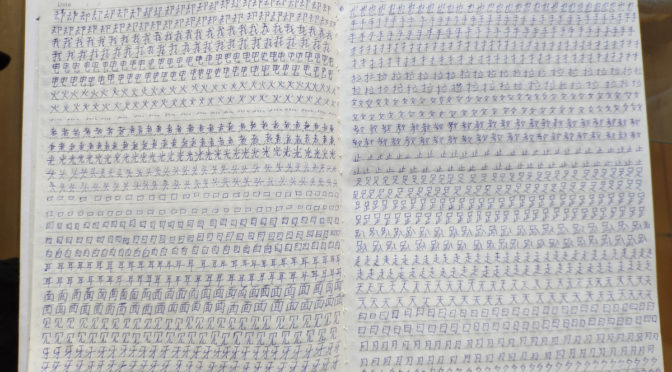So I’ve continued to study Chinese but recently have kicked it up a notch and now I have a bit more of a clearer goal in mind. I’d like to hit HSK 4 or 5 within the next year.
What is HSK?
Hanyu Shuiping Kaoshi (汉语水平考试) is a 6-band descriptor of one’s proficiency in the Chinese language. Each level means that you’ve gained proficiency in a certain number of characters and a grasp of elements of the Chinese language, particularly grammar. It’s a computerized test which requires the ability to read Chinese and answer questions. Here’s a chart of the different levels:
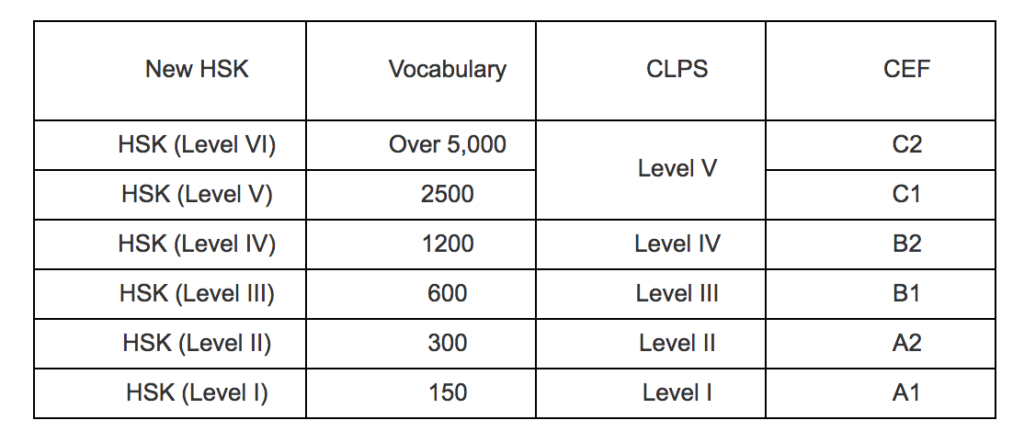
You can read more at http://www.chinesetest.cn
There is also a speaking component, but that’s optional.
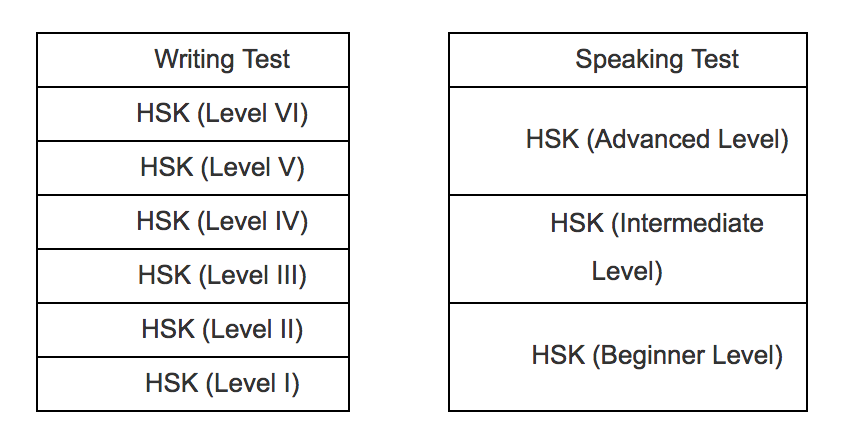
Luckily, the first two levels (HSK 1 and 2) give the pinyin for the Chinese characters, but after HSK 3, it’s just the Hanzi itself. The (non-Chinese) colleagues of mine who can speak the language are typically around HSK 5, though some are HSK 6. At HSK 4 or 5 I think you need to write a short composition, about 150 characters or so, but I don’t recall exactly.
You’ll note that I’ve previously written that I’m probably around an HSK 1.5 or 2, which is pretty accurate. I recently picked up the “Standard Course” for studying for the HSK test and, after considering the differences between the HSK 2 and 3 books, I found the HSK 2 just about right. Although much of what the book covers is already familiar to me, it covers the grammar in small chunks, something I’ve heretofore avoided studying (and most language learners agree with that approach to language learning: skip the grammar until later).
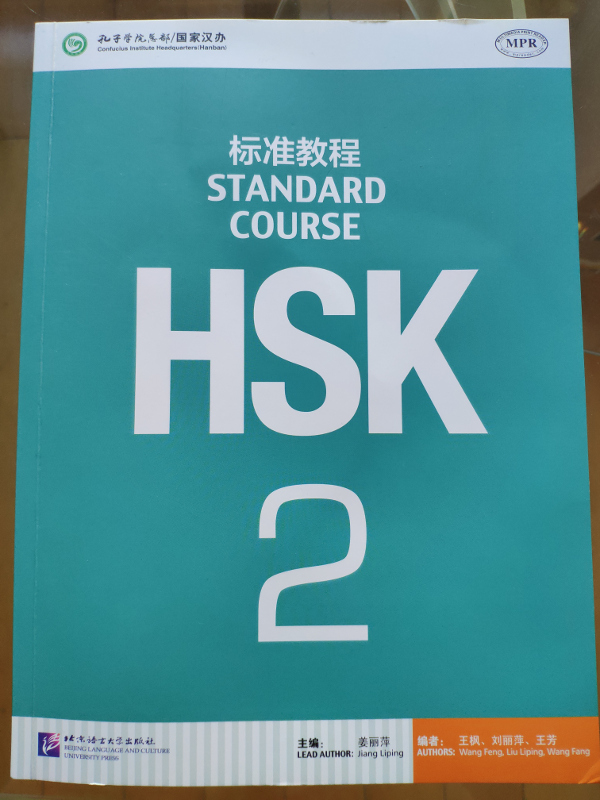
I’ve also found that reading the actual Chinese sentences is a lot easier now than it was two or three years ago. MUCH easier. And that is important. Instead of having to look up every single word in the sentence, now I can focus more on the idea of the sentence instead of just the meaning. This was an important step in my understanding of Chinese grammar.

All that being said and written, it seems that I should know somewhere near to 600 Chinese characters, but I’m not sure how many more than that. Although many characters look familiar now (instead of just a jumble of pick-up-sticks), meanings and pronunciation sometimes elude me.
Why this change of direction?
A few things happened.
First, I renewed my contract but, as I’ve made clear before that Beijing is not home and just about any ESL-industry job is very much an annual decision (and sometimes not yours to make), I got thinking that this is an opportunity to finally learn another language proficiently and actually use and apply what I learn on a daily basis. So, given the circumstances, it makes sense to have a go at becoming proficient, possibly even to the level that it’s easy to maintain.
Second, after talking with a few colleagues about their Chinese language skills, many of them said it took about a year of being physically in China and committing to learning the language that they actually progressed. Since I’ve been in Beijing for about four years now, I figured my Chinese language skills should be better than they actually are but should be roughly equivalent to a couple of years at university-level. That being the case, I do have a foundation from which to increase my language abilities so, although attaining HSK 4 would be a lot of work, it’s not overly difficult and it’s not impossible. But it does require concentration and effort.
Third, when out for lunch with a couple of colleagues to celebrate our contract renewals, I saw one other (non-Chinese) guy writing a sentence in Chinese and wondered how he had got to that level. He showed me a notebook in which he had written Chinese characters over and over again. He told me that he used to spend four or five hours a day after school watching TV, picking out a character and just writing it over and over again. He was currently on his second notebook. He also mentioned he used Memrise and Pleco, both APPs I’ve used but have found not to my liking (though I use similar strategies that those APPs offer). And I thought, well, why not? Why haven’t I done something like that? So I started doing exactly that.

Fourth, all of the above factors contribute to the single thought: why not? I have the time and the energy and my job doesn’t require me to do too much thinking outside of work hours (or even during it sometimes) that I can spend my brain power on developing my language skills rather than preparing class materials or whatever else.
So what is my schedule like for learning Chinese?
In the morning I try to spend about 25 minutes writing Chinese characters, within which I’m usually able to get at least five or six done, though I like to aim for seven to ten characters. I’ve also switched books from the one I was using before and am now using what Chinese kids use in school. (This book was actually given to me when I first came to China by one of my students who wanted to teach me Chinese. It didn’t work out but now I’ve gone back to using this same book.)
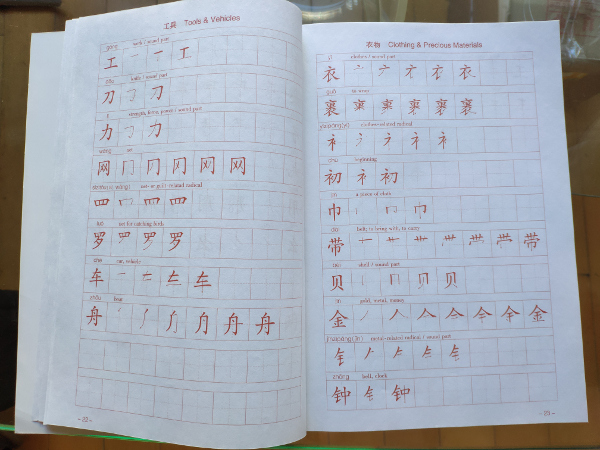
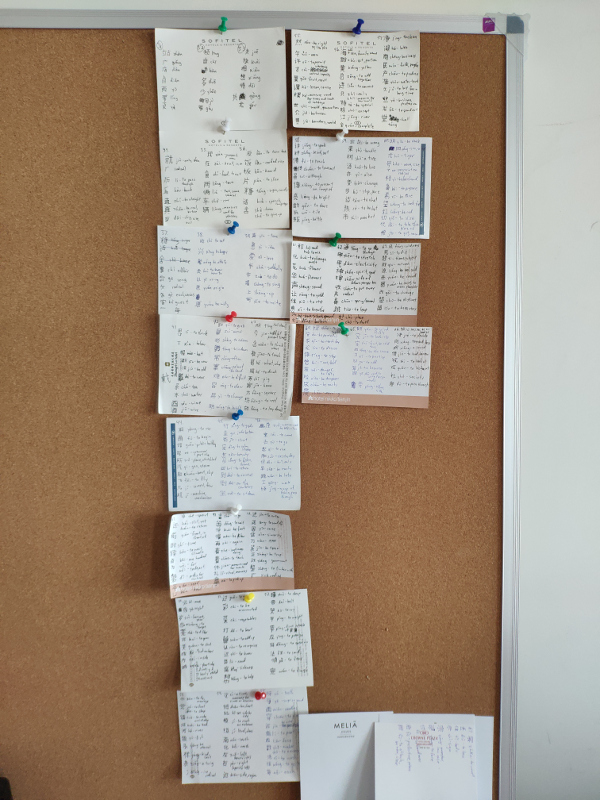
At lunch I get my cell phone and headphones and listen to my audiobook or a short podcast (such as slowchinese.com) for about 25 minutes while following along with the Hanzi. For this I often have to segregate myself from my colleagues because I want to avoid the English banter that goes on during the breaks. I’m currently making my way through Book 1 of the 三体 trilogy, though I think I’ll stop after I finish the first book and read something else for a change.
In the afternoon, I try to read a book with pinyin for about 25 minutes. I’m currently working on an abridged version of 围城 Wei Cheng, a Chinese classic. I recognize a lot of the characters but probably couldn’t translate much of the book if someone asked me to, at least not by sight. Using a dictionary? Of course. Electronic dictionaries have made translations far easier than years before.
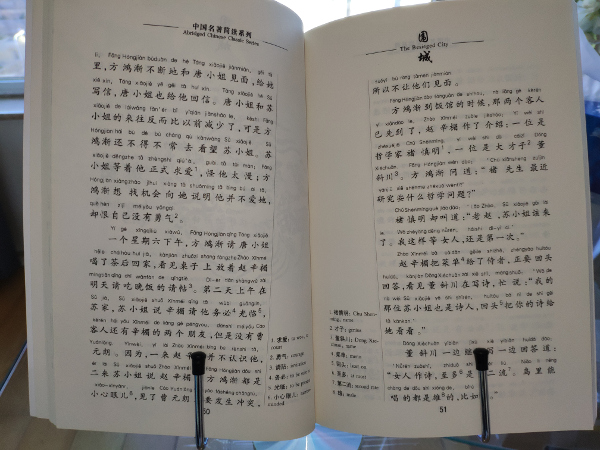
Finally, (and this is the newest addition to my schedule), when I get back from work, whether it’s to the hotel or my apartment, before I go to the gym, I try to sit down and go through one chapter of this HSK 2 course book. Though “easy” in a sense, I want to be sure to focus more on the grammar bit by bit so I make sure I do each exercise. How do I check my answers? Simple: I just follow the examples given. The point isn’t to test my abilities here but to get the grammatical structures correct.
So what will I do with all of this? What happens when you achieve your goal?
Well, that’s a good question because I’m certainly not looking for any job that requires me to be proficient in Chinese nor do I really see myself living in China forever which means that attaining HSK 5 in Mandarin Chinese is really only appropriate for Mainland China, not global Chinese. Many of the “expat” Chinatowns around the world host people from the south of China and that means they often speak Cantonese and may use traditional Chinese characters, not the simplified ones of the Mainland.
I suppose much of this language goal is to simply do it and take advantage of the opportunity I have in front of me. I can’t say I’m enamoured by the language or the culture, nor do I particularly need the language to get by on a day-to-day basis. As a matter of fact, every time I find out something about Chinese culture, I wonder why I have never applied the same effort to Ukrainian culture.
Either way, I don’t see it as a bad thing to try to up my level of the Chinese language. It may or may not be useful in the future but I do have an opportunity and I think I’d be remiss if I didn’t take advantage of it. Then again, maybe this is just some new contract enthusiasm and it may fall apart in a few months. I’ve made plans before with other jobs only to see life take me on a very different path. All that is to say, it’s an idea that I’m working on and I’d like it to work, but it may not.
With that, time to read.
